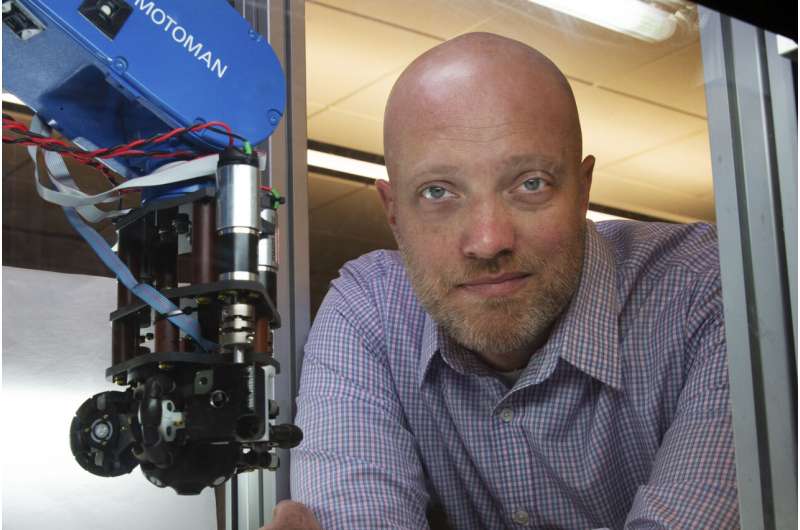Study led by NUS researchers reveals climate change increases fluvial sediment in the high mountains of Asia
The findings have far reaching implications for the region’s hydropower, food and environmental security
Peer-Reviewed PublicationHigh Mountain Asia (HMA), which refers to the Tibetan Plateau and the surrounding high Asian mountains, is home to the world’s third-largest ice reservoir and the origin of many of Asia’s large rivers. In fact, these rivers are crucial lifelines for a third of the world’s population. The rivers in HMA are experiencing increased runoff and sediment fluxes from amplified climate change, glacier melt and permafrost thaw.
To examine the impact of these phenomena on HMA, Professor Lu Xixi and Dr Dongfeng Li from the Department of Geography at the National University of Singapore (NUS) Faculty of Arts and Social Sciences led an international team of researchers to conduct a new analysis of observations of headwater rivers in the area. The study revealed that fluvial sediment loads have been increasing substantially, even much faster than river water discharge. This is due to the recent warmer and wetter climate, and has important implications for water quality, hydropower development and maintenance, and for the riverine carbon cycle.
Dr Li, Research Fellow from the NUS Department of Geography and the study’s lead author, said “Climate change is accelerating glacier retreat and permafrost thaw, resulting in the previously frozen landscapes becoming more erodible. Our study shows that emerging process, such as glacier retreat and permafrost thaw, will enhance the transport of sediments from slopes to river systems, especially when regional extreme rainstorms are also increasing. This has significant knock-on effects on the region’s hydropower, food and environmental security, potentially affecting millions of people in HMA and downstream regions.”
The results of the study were published today in Science Magazine.
Analysing flow and sediment load data in HMA headwaters
The project was done in collaboration with some of the world’s renowned scientists in the field of sediment transport including Associate Professor Irina Overeem, Prof Jaia Syvitski and Prof Albert Kettner from the University of Colorado, Boulder (CU-Boulder); Prof Des Walling from the University of Exeter; Prof Bodo Bookhagen from the University of Potsdam; and Prof Yinjun Zhou from the Changjiang River Scientific Research Institute, Wuhan, China.
The team collated and analysed available flow and sediment load data from rivers in HMA over a period of six decades to investigate changes in runoff and sediment flux in response to a warmer and wetter climate. To exclude the potential impact of human activities, 28 quasi-pristine headwater basins were selected. The team then studied the sensitivity of sediment flux to changing temperature and precipitation in HMA using observational data and a climate elasticity model.
Based on the study, the team estimated that the present-day fluvial sediment flux from HMA is nearly two billion metric tons per year, and could more than double by 2050 under an extreme climate change scenario.
“The cascade of impacts of climate change, first by planetary warming, then by amplified changes in alpine temperature and precipitation patterns, followed by melt and release of sediment from glaciers and frozen landscapes, and subsequently by increased sediment transport by rivers, demonstrates how planet Earth is being altered through our continued use of fossil fuels,” stated Prof Syvitski who is also former Chair of the International Geosphere-Biosphere Programme.
The team further reasoned that the increasing sediment loads have profound impacts on the maintenance of downstream hydropower reservoirs. “The increasing sediment inflow to reservoirs will decrease the storage capacity of the reservoirs, and thus reduce their expected lifespans. As a result, all reservoir services like water supply, irrigation, hydropower generation, and flood control will be negatively impacted”, said Prof Lu, Principal Investigator of the study.
Prof Overeem added, “Since the 1950s, amplified warming in the HMA headwaters has increased sediment loads at an average rate of 32 per cent for every one degree of warming. Thaw of this landscape now has already triggered profound change in soil erosion and sediment delivery to the rivers. Glaciers are known to be efficient sediment producers, but this study suggests that the role of permafrost thaw in longer-term climate and sediment cycles may be more important than previously thought.”.
The team noted that increased sediment concentrations will likely negatively impact water quality and aquatic ecosystems. Fine suspended sediment particle is an important vector for the transport of phosphorus and most heavy metals, such as mercury, chromium, arsenic, and lead. Thus, climate change is likely to increase sediment-associated nutrient and contaminant fluxes. Furthermore, suspended sediment is a key vector for organic carbon transport; and the precise role of erosion and sediment delivery in mobilising organic carbon from permafrost landscapes and delivering it to the fluvial system remains uncertain. The team shared that more observations were needed to assess the positive feedback between climate warming, permafrost degradation, and carbon cycling.
The researchers also added that a substantial proportion of the increased sediment could be temporarily deposited in the river system, wide alluvial valleys and river floodplains, aggrading riverbeds, potentially triggering river avulsions and increasing the risks of flooding, particularly during the monsoon season. However, increases in sediments are not always bad. Riverine sediments can be used as soils for local agriculture practices in the high mountain regions, and are important materials for construction and coastal protection structures in small island countries such as Singapore. For example, one billion tons of sediment can be used for the construction of two great walls of China.
“These unique long-term riverine datasets of many of the headwater rivers of the high-mountains of Asia made it possible to determine how the landscape is rapidly transforming under an amplified climate change. This amplified climate change is also observed at the polar regions, where unfortunately long-term river datasets are sparse. However, it would be very interesting to see how the landscape responds at those polar regions, if there are similarities and what the downstream implications could be for the communities and the environment,” said Prof Albert Kettner, Research Professor from the Institute of Arctic and Alpine Research at CU-Boulder.
Dr Li commented, “This study sheds light on the importance and potential implications of the marked increases in recent and future sediment fluxes that have not been fully recognised by scientific communities nor have they been fully taken into account in the assessment of potential changes in the global carbon cycle. We hope this will encourage more observations on fluvial sediment in the world’s cold environments.”
The next step for the research team is to develop a dynamic sediment transport model suitable for cold environments. This would help to better understand the seasonality of future fluvial sediment in a rapidly warming world.
JOURNAL
Science
DOI
Runoff, sediment flux in High Mountain Asia could limit food, energy for millions
Average temperatures in high altitude areas have risen twice as fast as the global average, causing more river runoff and sediment flux, and the trend could get worse, scientists find
Peer-Reviewed PublicationRivers flowing from the Tibetan Plateau and the surrounding high Asian mountains which support one-third of the world’s population have experienced rapid increases in annual water and sediment runoff since the 1990s, and the volume of sediment washed downstream could more than double by 2050 under the worst-case scenario, a team of scientists has found.
The cause is “amplified warming”: Since 1950, the High Mountain Asia area, or the region of Asia containing five mountain ranges including the Himalaya and Hindu Kush around the Tibetan Plateau, has warmed by about 2 degrees Celsius, twice the amount of warming worldwide. That warming is precipitating more glacier melt, permafrost thaw while annual rainfall is also increasing, the researchers note.
“These findings have far-reaching implications for the region’s hydropower, food and environmental security,” the researchers observe. The findings also highlight the under-appreciated importance of sediment fluxes and have implications for potential changes in the global carbon cycle, they add.
The research, published today in the journal Science, is led by the National University of Singapore and includes three researchers from the University of Colorado Boulder, including Irina Overeem, Jaia Syvitski and Albert Kettner, all researchers in the Institute of Arctic and Alpine Research. Overeem is also a CU Boulder associate professor of geological sciences, and Syvitski is professor emeritus of geological sciences.
The scientists analyzed observational data of runoff and sediment fluxes from 28 headwater basins over the past six decades.
Sediment flux is the mass of sediment that passes through a specific point in a river basin over a given time period, “like truckloads of sand being transported, in this case by water,” Overeem said. Although river runoff, the amount of water entering a river system, and sediment flux are both increasing, they are rising at different rates.
In the river basins the scientists studied, runoff increased by about 5% per decade, while sediment flux increased about 12% per decade.
Overeem explained the variability is affected in two ways: “With glacial melt and permafrost thaw there are new sources of sediment, that previously had been frozen in place in the landscape now can slump into the river. In addition, if more rainfall triggers bigger floods, you suddenly have exceeded a threshold and you can pick up so much more sediment” compared to average conditions. “If you increase the source and the proportion of a couple of these extreme events, you'll get disproportionally much more sediment. So that is maybe what's going on in this system.”
River-borne sediment can benefit highly populated areas like Bangladesh, where sediment helps maintain the coastal zone. But in other areas such as Tibet or Nepal, which have hydro-electric power plants, rising levels of sediment can wear out the dams’ turbines and fill reservoirs with sand and silt.
By harming existing or planned hydropower projects and reducing irrigation capacity, rising sediment fluxes can thus “threaten the region’s food and energy security,” the authors write. Additionally, the rising levels of sediment, which can carry nutrients, pollutants and organic carbon, can have implications for water quality and flooding, potentially affecting millions of people.
Research on the High Mountain Asia watershed was facilitated by the area’s unusually good, long-term records of streamflow and sediment flux, Overeem said, adding that datasets of similar quality do not exist for Greenland or the whole Arctic.
In the Arctic, scientists have also recorded increases in water discharge from melting ice and increasing rainfall but have few measurements of sediment flux.
“What is happening on the Tibetan plateau may be happening in the Arctic as well, but we just don't have enough long records there and observational support to really know that yet,” Overeem said.
The research was led by Dongfeng Li and Xi Xi Lu of the National University of Singapore.
JOURNAL
Science
ARTICLE TITLE
Exceptional increases in fluvial sediment fluxes in a warmer and wetter High Mountain Asia
ARTICLE PUBLICATION DATE
29-Oct-2021



